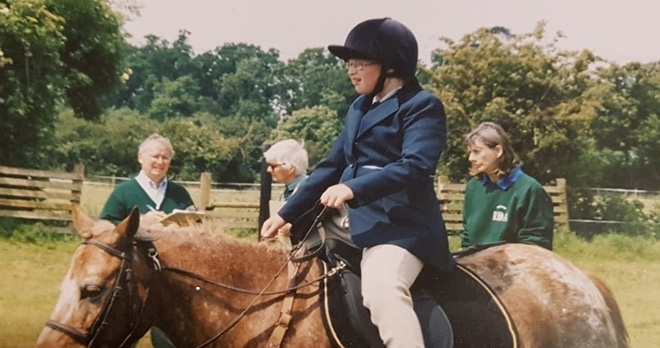How brain injury occurs with shoulder dystocia, and the effects

Unfortunately, sometimes a baby’s shoulder can become stuck during childbirth, a situation known as shoulder dystocia. Fortunately it is a relatively rare occurrence, in the UK happening in about 1 in 150 (0.7%) of vaginal births each year. When it does happen though, sometimes the oxygen supply to a baby’s brain can be disrupted.
When the oxygen supply to a baby’s brain is compromised, a condition known as hypoxic ischaemic encephalopathy (HIE) may be caused. HIE is dangerous and can develop into severe brain injury at birth, so should be treated promptly.
What is shoulder dystocia?
Shoulder dystocia occurs during childbirth, where a baby’s head is born but one of their shoulders becomes stuck behind the mother’s pubic bone. This can delay the birth of the baby’s body and usually requires extra help to release the baby’s shoulder.
What causes shoulder dystocia?
There are a couple of risk factors for shoulder dystocia, including a larger than average baby identified during the course of pregnancy, and/or similar problems experienced in a previous delivery.
How does brain injury occur with shoulder dystocia?
Unfortunately when a baby becomes stuck as a result of shoulder dystocia, there is a chance that they can suffer oxygen starvation (or HIE as mentioned above). When the brain is starved of oxygen a brain injury can occur.
Can shoulder dystocia cause cerebral palsy?
If a child suffers a brain injury at birth, as a result of oxygen starvation that occurs due to shoulder dystocia, they will often be left with long-term cognitive and/or physical disabilities; collectively known as cerebral palsy.
What are the long-term effects of shoulder dystocia?
If shoulder dystocia results in damage either to the child (HIE or nerve injury to their shoulder) or the mother during delivery, there can be long-term impacts on the child and/or parent’s life. A child, for example, will likely be left with Erb’s palsy after brachial plexus nerve damage suffered as a result of mis-managed shoulder dystocia.
Shoulder dystocia and Erb’s palsy
Should a shoulder dystocia not be properly managed through the delivery of a child, brachial plexus injury can occur and can sometimes result in permanent damage: this is sometimes also called Erb’s palsy. The level of damage is classified into five groups:
- Group 1: paralysis of shoulder and biceps
- Group 2: paralysis of shoulder, biceps, and wrist extensors
- Group 3: paralysis of entire limb
- Group 4: paralysis of entire limb with temporary Horner’s sign*
- Group 5: paralysis of entire limb with persistent Horner’s sign and poor recovery.
*Horner’s sign referring to a syndrome where a child’s eyelid will droop and pupil be constricted as a result of extensive nerve damage.
Injuries to the mother after shoulder dystocia – what about mum?
In some cases, the forces of labour and methods used to release a baby from shoulder dystocia can result in injuries to the mother during childbirth. These can result in long-term issues from urinary and faecal incontinence right through to nerve damage, all of which are life-changing injuries.
What can be done when shoulder dystocia arises to avoid brain injury?
In order to avoid brain injury as a result of shoulder dystocia, it is important for a baby to be released as quickly and safely as possible.
It can be difficult to manage the delivery quickly, in order to avoid damage to the child’s brachial plexus nerves – as described above – but there is a well known set of techniques that should be employed to ensure safe delivery of the baby, including the McRobert’s manoeuvre.
This manoeuvre involves raising a mother’s knees and pushing them tightly to her abdomen, in order to raise the pubic bone (usually by about two centimetres) and hopefully release the baby safely.
The effects of a brain injury
The effects of HIE vary enormously, depending upon the length and degree of oxygen starvation that occurred.
At the extreme end of the spectrum, where there is a lengthy gap between the onset of oxygen starvation and delivery, a very serious brain injury might well occur. The effects of such an injury can be profound, and will include cerebral palsy – a patient group in which pronounced problems with movement and overall function of the brain is common.
Often children with cerebral palsy will experience what is known as global developmental delay, which involves a child being unable to reach specific development milestones such as being able to roll over, follow instructions, smile or laugh, or communicate in their first year of life.
A moderate or mild brain injury may also occur. In patients who have suffered a relatively mild brain injury, the signs are often subtle, and may not be picked up until some way into the child’s life.
More specifically:
- Problems with reading, writing, mathematics and pronunciation can all be suggestive of an underlying injury;
- Problems with fine motor skills including – perhaps – difficulty with holding a pen or typing could be suggestive, and dyspraxia (issues with coordination) might also be present;
- Behavioural problems can also occur. Such problems will not just be temper tantrums. Extreme outbursts, meltdowns, difficulties in communicating effectively with other people or grasping other people’s points of view, and obsessive behaviours are all known to be associated with brain injuries as a result of an inability to control emotional responses. A cluster of these characteristics would be worrying.
It is not unusual for children with mild brain injuries to experience additional difficulties at around the time they enter secondary education. This is partly because educational demands on the child will tend to increase at this time, and partly because children at this age are expected to take on a greater degree of independence than formerly.
Negligence and shoulder dystocia
If a subtle brain injury is suspected, that possibility should always be raised with healthcare professionals. A prompt diagnosis can facilitate both educational and pastoral assistance. It is therefore vital that you communicate any concerns you have to your child’s treating clinicians, who will be able to assist. Equally, if you are in the process of bringing a claim arising from Erb’s palsy, it is very important that you discuss the possibility of a brain injury with your legal team. This will enable your lawyers to investigate things for you, and hence ensure the best outcome for your child.If you would like to discuss any issues raised by this article further with a member of our specialist clinical negligence team, then please do get in touch. We will be happy to advise you initially, without charge or obligation.
Our medical negligence team includes a number of experts in birth injury, who are here to help you should you have any questions about shoulder dystocia and brain injury. Contact our enquiries team to find out more.
Call now










